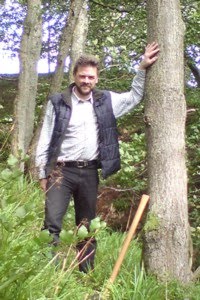I am uncommonly pleased to announce that a contract for the preparation of a publication has been cordially agreed between Amberley Publishing of Stroud and myself.
The book, currently titled The Archaeology of Postholes: Reconstructing Prehistoric Buildings, will have 60,000 words, with 130 illustrations, and while advance order lines will be waiting to take your call, I’d give it a couple of weeks, as I haven’t written it yet.
Many thanks to Miles Russell for his good offices.
This is the basic synopsis for the book which I developed last February. It will cover many of the topics covered so far on Theoretical Structural Archaeology, but with a linear rather than episodic narrative structure, and it will require a new set of black and white illustrations.
Many thanks to Miles Russell for his good offices.
This is the basic synopsis for the book which I developed last February. It will cover many of the topics covered so far on Theoretical Structural Archaeology, but with a linear rather than episodic narrative structure, and it will require a new set of black and white illustrations.





















